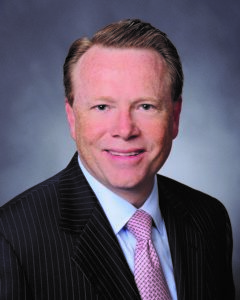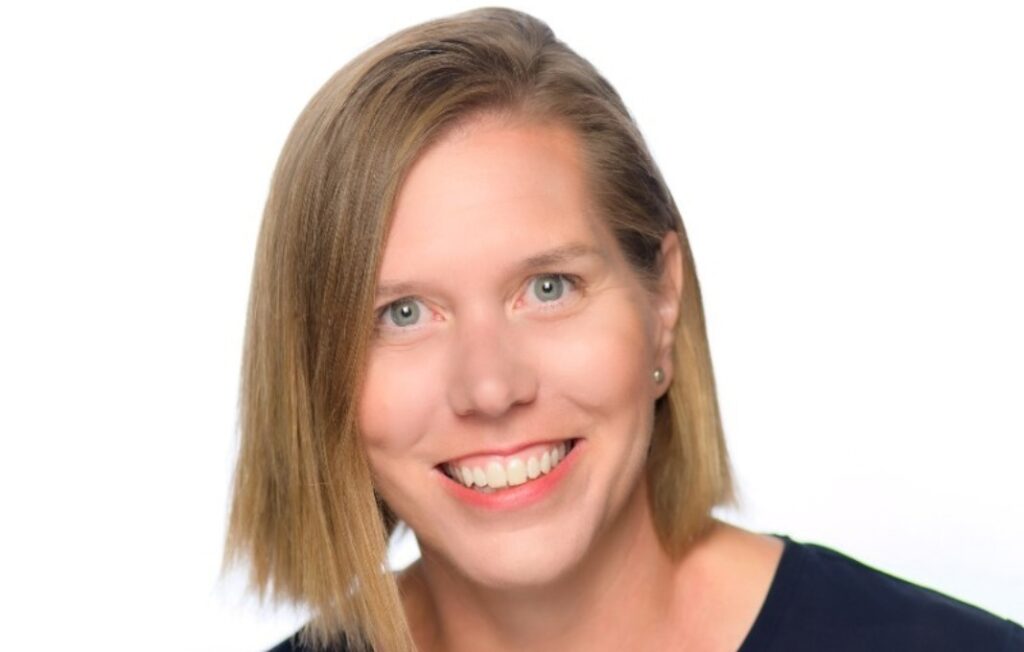Before becoming CFO at Picsart, the world’s largest online creative platform for photo and video editing, Craig Foster was the CFO of five other technology companies in the San Francisco Bay Area. Prior to these stints, he was a software investment banker at UBS and a finance consultant at Deloitte, whose job was to deploy giant ERP systems. “When Marc Andreesen (at venture capital firm Andreesen Horowitz) said that `software is eating the world,’ to me he was preaching to the choir,” said Foster.
The veteran CFO has enjoyed a front-row seat watching the evolution of the finance organization from manual processors of financial data like journal entries, account reconciliations and transaction matching into users of automated technology to perform these tasks to where things stand today—analyzing digital data to unearth insights guiding the business forward. This remarkable progression from the back office to the pointed tip of the front office is reimagining the role of the finance organization.

“Every CFO I know that’s automated finance and accounting to put an end to mundane day-to-day processing is eyeing this dream state where a button is pushed, everything is fully reconciled and the books close,” said Foster. “We’re almost there and when we reach this state, the business intelligence that finance delivers to decision-makers across the enterprise, using increasingly powerful AI tools to analyze tons and tons of data, will be mind-blowing.”
As dream becomes reality, CFOs will transform into what Foster called “the attributor of data,” explaining that finance chiefs and the organizations they lead will be relied upon to verify the truth behind the various business, economic, demographic and market movements modeled by AI technologies like machine learning and elucidate the implications.
“What we’re doing in finance now is developing the tightest integration possible of the data we generate across the 180 countries we operate in,” he said. “This real-time, accurate business intelligence is closely tied to our capital allocations to drive growth, given more assured returns on the investments.”
Other CFOs also have equipped their finance teams with innovative technologies to collect, analyze and query internal data, with the goal of making useful sense of this information. Once insights are captured, they’re passed on to colleagues in marketing, sales, operations and other functions for their respective needs and purposes. “Our `north star’ in finance is to help others solve the problems they’re trying to solve on behalf of our customers,” Foster said.

Craig Horner sees a similar purpose in his finance organization. “All the data that resides in our proprietary systems—more than a million transactions occurring every month—is ripe for analysis,” said Horner, CFO at Kelly Benefits, an employee benefits, payroll and HR software solutions provider. “My team does the analytics, using tools like SQL to extract and organize data, and then feeds it to our marketing and operational leaders to guide a clearer path towards growth.
“This wasn’t the case in the past because it wasn’t something anyone could dump into Excel and hope to make sense of it,” Horner added. “Now this knowledge is available to every finance organization.”
The Machine-Mind Connection
He’s right, assuming that CFOs make needed investments in cognitive computing technologies and train finance staff in the use of these self-learning tools. If this is the case, the staff can become value-added strategic advisors beyond the services performed by the FP&A (financial planning and analysis) team. “Finance is moving towards a world of machines-plus-humans, which is redefining the role of the humans,” said Eric Merrill, managing director within Deloitte Consulting’s finance and enterprise performance market offering.
Finance organizations no longer are expected to just collect data, he said, they will progressively be entrusted to deliver fresh perspectives mined from the data. “Enlightened CFOs are asking their teams to do root cause investigative analyses to craft a narrative of where capital can best be deployed to generate more assured returns,” Merrill added.
Like any good narrative, this story needs to comprise basic elements like conflict and tension. In the case of a commercial entity, the conflict is the divergence between capital decisions based on substandard business intelligence and decisions driven by superior business intelligence. The tension is the ability of finance to draw conclusions from structured, semi-structured and unstructured data in alignment with strategic objectives. “To be the storyteller—to source and visualize real-time insights—it behooves the finance staff to be technologically savvy,” Merrill said.
These capabilities are becoming much easier to acquire. “Assuming data is gathered and stored in a data lake or in the cloud, it can be mined and analyzed by non-technical people using pre-packaged AI tools available on a plug-and-play basis,” he said.
These “machines-plus-humans” competencies ultimately will transform finance into a more strategically constructive organization. “Finance is uniquely positioned to generate insights on the relationships between the things going on in the outside world and the historical things going on in the company, guiding everyone in thinking about where the organization is going and what it can achieve next,” he said.
Plotting the Course
AI-driven discernments are guiding the finance team at Harcourts, one of Australia’s largest full-service real estate and property management organizations, to help the company’s more than 900 franchises in nine countries grow their individual real estate brokerage businesses, said CFO Kym Warner at privately held Harcourts, which sells roughly $60 billion worth of properties and manages around 120,000 properties on an annual basis.
“We’re using Domo’s business intelligence software tools in finance to pull together a wide range of data on the properties we manage, such as rental prices, the impact of Covid on [tenant] vacancies, job losses and whether properties are churning or are net positive,” Warner explained. “The value of pulling together this information for franchise decision-making and growth is inestimable.”
Providing this information also has contributed to finance team member “happiness,” she said, at a time when many employees across the world are reexamining the purpose of their jobs. Nearly two-thirds of U.S.-based employees in a recent survey by McKinsey & Company, for example, said the pandemic has caused them to reexamine the work they’re doing.
“The finance staff here is given opportunities to learn different facets of the business beyond management accounting and financial accounting to help franchises, from massive franchises to small `mom and pop’ shops, run their businesses better,” Warner said.
To provide this level of service, the CFO has upskilled her team members to better communicate the data insights they’ve unearthed with the franchises, which helps improve their financial literacy. “My team considers this work to be meaningful,” she added.

At mutual insurance company FM Global, which provides commercial property insurance and loss prevention services, CFO Kevin Ingram said his finance team assists the company’s engineers in their use of data and analytics models assessing clients’ property loss exposures relative to the insurance coverages provided. Over the past 20 months, when face-to-face on-site assessments were limited, these interactions were instrumental in helping staff engineers estimate expected maximum losses as a percentage of a building’s value.
At present, the finance organization is helping FM Global’s investment management arm, modeling the impact of remote work on the insurer’s commercial real estate portfolio. “To diversify our investments, we own and invest in commercial properties,” he explained. “We’re collecting and analyzing data on how the growing `work from anywhere’ concept will affect the office buildings in our portfolio (in terms of possible vacancies). This information is important to our investment strategy.”
Since many large companies are considering the development of a series of smaller office hubs for their knowledge workers when working remotely, there’s a possibility that the impact on the investment portfolio will be closer to net zero. “We’re in a data-intensive industry and have long been ahead of other finance organizations in automating our processes and in our use of analytical tools,” the CFO said. “The finance team is freed up to work with other parts of our organization on strategy, most recently on the pandemic’s potentially adverse impacts like the sea change in the ways of working.”
At Kelly Benefits, Horner’s finance team is analyzing the more than one million transactions monthly flowing from its 12,000 customers, which is composed of 10,000 companies using its benefits administration services and another 2,000 companies using its payroll management services.
“By analyzing the data on the benefits administration side, we may learn we’re administrating a client’s group health insurance plan but not a group vision or group life insurance plan, for some reason,” he said. “Obviously, the more employees using the products and services on our platform, the more revenue opportunity.”
Armed with these insights, the finance organization reaches out to marketing and operations to discuss possible reasons and collaborate on a more effective customer approach. “The line between finance and other functions is direct and connected here; there are no functional silos,” Horner said. “The more data finance can feed to our marketing and operational leaders, the more successful we are going to be corporately.”
He added, “Like other CFOs, I’m transitioning the finance team from the compilation of data to the analysis of it, which requires a higher-level skillset. We’re looking for critical thinkers with problem-solving and communication capabilities, who understand our business to proactively engage with the rest of the organization.”
The finance team partners with Kelly Benefits’ HR staff to recruit people in finance with these specific technological skill sets. “For the most part, young people trained in finance already know how to gather data for analysis, which explains why there is a war underway for this talent,” Horner said. “We believe the merger of these digital natives with older finance professionals who have seasoned business knowledge and expertise is an optimal workforce approach.”
At Picsart, the San Francisco-based online photo and video editing company’s finance organization is “connected to the hip” of its business intelligence team, said Foster. “Together, we analyze customer data across our global footprint to unearth challenges and opportunities.”
Picsart tallies 12 global offices, including Barcelona, Hong Kong and Yerevan, Armenia, more than $100 million in annual revenues and over 850 employees. Having deployed a series of large data lakes, the finance and business intelligence teams collectively use tools like Databricks to process and aggregate its massive data volume and Looker’s big data analytics platform to explore, analyze and share real-time data analyses, Foster said.
It’s the “sharing” part that the CFO finds most important in terms of the strategic value of his finance team. As he puts it, “We’ve become the eyes and ears of the rest of the company.”








